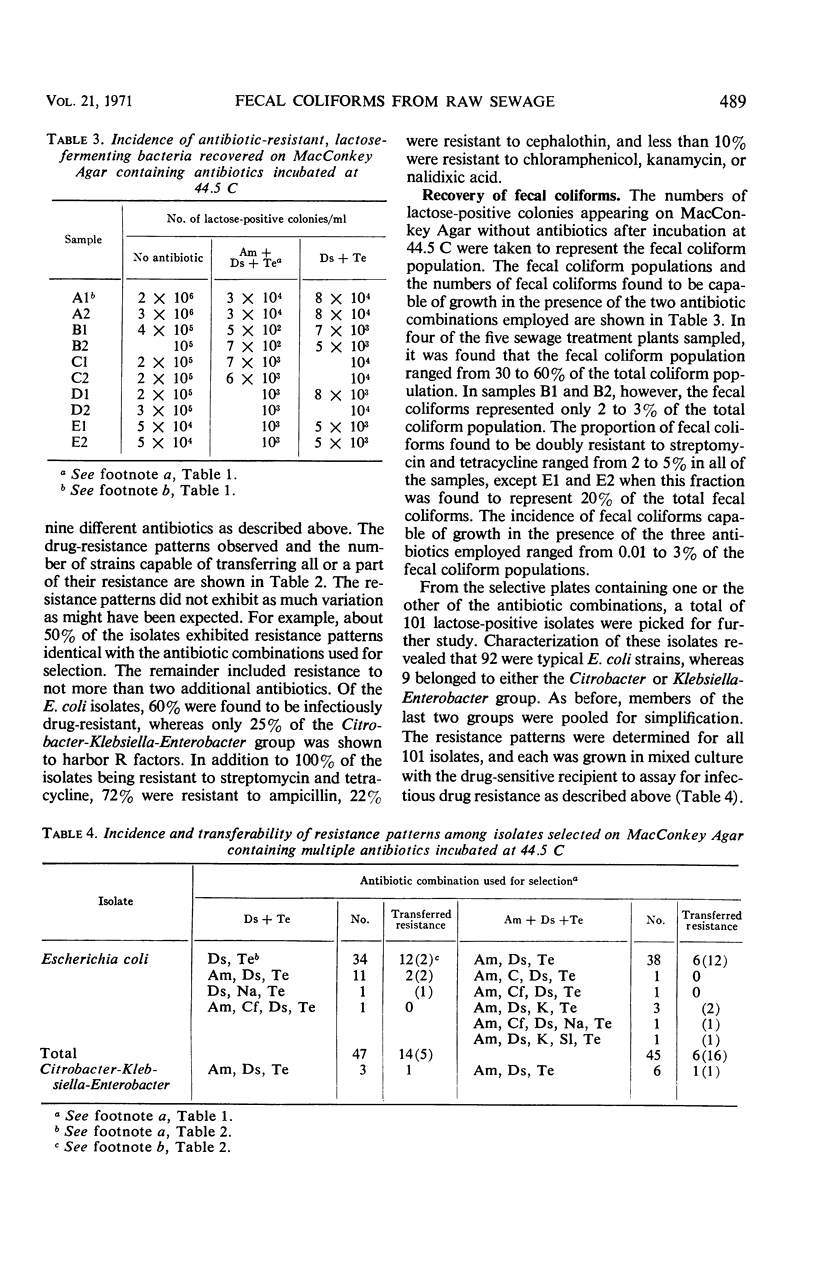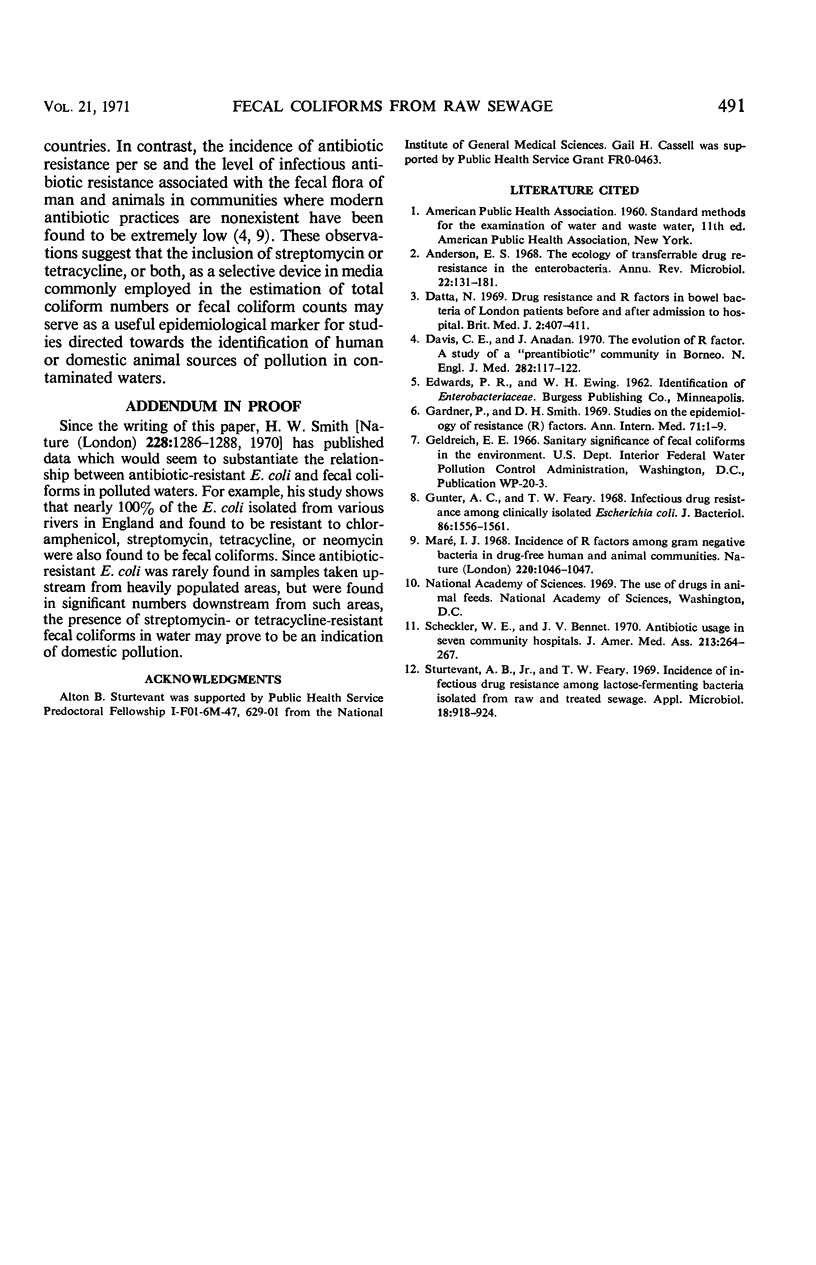Abstract
Raw sewage was examined for the incidence of antibiotic-resistant coliforms present among both total and fecal coliforms. In both groups, it was found that approximately 3% of the coliform bacteria were resistant to two or more antibiotics. Of these organisms, 48% were capable of transferring all or part of their antibiotic resistance to an antibiotic-sensitive, F−, derivative of Escherichia coli K-12. Among the R factors identified, those conferring resistance to streptomycin-tetracycline, ampicillin-streptomycin-tetracycline, and ampicillin or ampicillin-streptomycin accounted for 23, 20, and 15%, respectively, of the total R factors detected. The data indicate a significant level of infectious drug resistance among the fecal coliforms of the urban population. The data indicate further that because of the high incidence of coliform bacteria found to be doubly resistant to streptomycin and tetracyline, the inclusion of these antibiotics in selective media used for routine total or fecal coliform counts may serve to identify domestic sources of pollution.
Full text
PDF




Selected References
These references are in PubMed. This may not be the complete list of references from this article.
- Anderson E. S. The ecology of transferable drug resistance in the enterobacteria. Annu Rev Microbiol. 1968;22:131–180. doi: 10.1146/annurev.mi.22.100168.001023. [DOI] [PubMed] [Google Scholar]
- Datta N. Drug resistance and R factors in the bowel bacteria of London patients before and after admission to hospital. Br Med J. 1969 May 17;2(5654):407–411. doi: 10.1136/bmj.2.5654.407. [DOI] [PMC free article] [PubMed] [Google Scholar]
- Davis C. E., Anandan J. The evolution of r factor. A study of a "preantibiotic" community in Borneo. N Engl J Med. 1970 Jan 15;282(3):117–122. doi: 10.1056/NEJM197001152820302. [DOI] [PubMed] [Google Scholar]
- Gardner P., Smith D. H. Studies on the epidemiology of resistance (R) factors. I. Analysis of Klebsiella isolates in a general hospital. II. A prospective study of R factor transfer in the host. Ann Intern Med. 1969 Jul;71(1):1–9. doi: 10.7326/0003-4819-71-1-1. [DOI] [PubMed] [Google Scholar]
- Gunter A. C., Feary T. W. Infectious drug resistance among clinically isolated Escherichia coli. J Bacteriol. 1968 Nov;96(5):1556–1561. doi: 10.1128/jb.96.5.1556-1561.1968. [DOI] [PMC free article] [PubMed] [Google Scholar]
- Maré I. J. Incidence of R factors among Gram negative bacteria in drug-free human and animal communities. Nature. 1968 Dec 7;220(5171):1046–1047. doi: 10.1038/2201046b0. [DOI] [PubMed] [Google Scholar]
- Scheckler W. E., Bennett J. V. Antibiotic usage in seven community hospitals. JAMA. 1970 Jul 13;213(2):264–267. [PubMed] [Google Scholar]
- Sturtevant A. B., Jr, Feary T. W. Incidence of infectious drug resistance among lactose-fermenting bacteria isolated from raw and treated sewage. Appl Microbiol. 1969 Nov;18(5):918–924. doi: 10.1128/am.18.5.918-924.1969. [DOI] [PMC free article] [PubMed] [Google Scholar]


